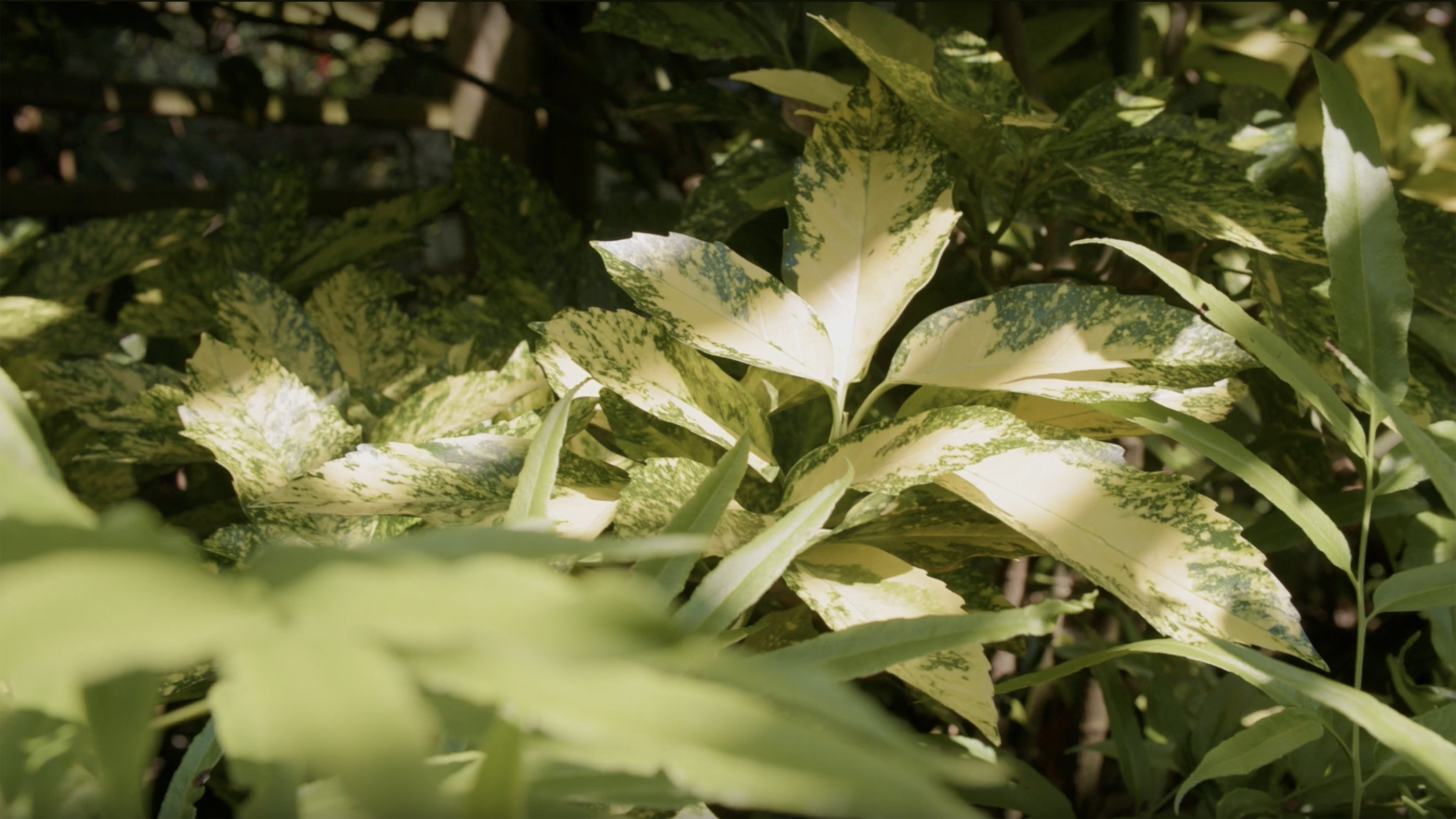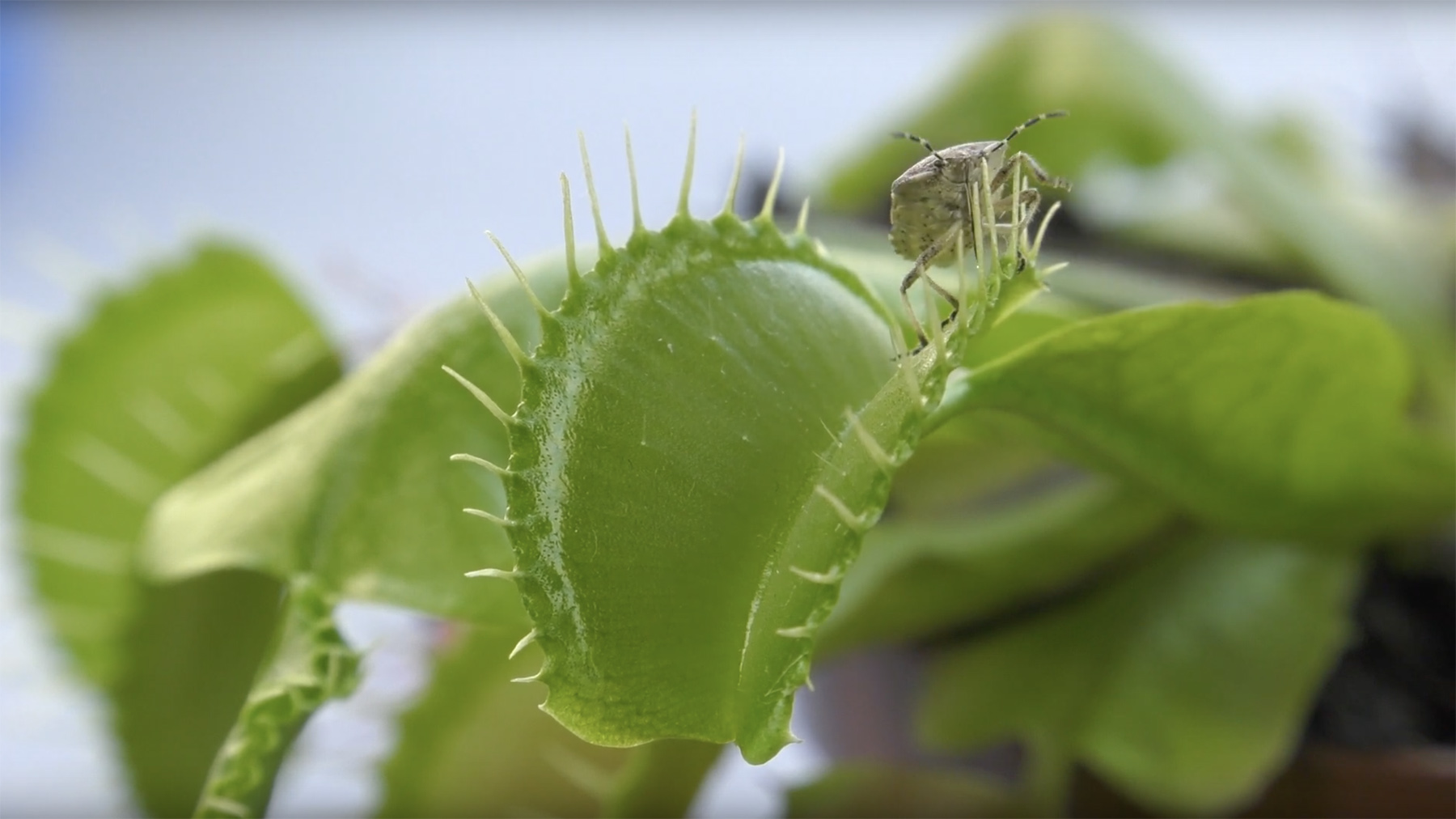Asian Needle Ants in North Carolina: What to Know
They’re invasive. They sting. And they’re spreading across North Carolina.
Ever see a lone black ant wandering through your yard — not following a trail, just doing its own thing? There’s a decent chance it might be an Asian needle ant, and if so, it’s worth paying attention.
These insect invaders are spreading across North Carolina and the East Coast, and while they’re not aggressive like fire ants, they pack a painful sting — and in some cases it can cause serious allergic reactions.
Asian needle ants aren’t aggressive, but their sting can cause allergic reactions more severe than fire ants.
The good news? They can be managed with care and the help of experts like Chris Hayes, structural pest management expert with NC State Extension.
What Are Asian Needle Ants?
Asian needle ants (Brachyponera chinensis) are an invasive ant species known for their sting and stealth, as well as changing the landscape for native ants across the Southeast. As the name implies, they’re native to East Asia, but have made themselves at home in the U.S. since the 1930s – they’re now found in most of North Carolina’s 100 counties.
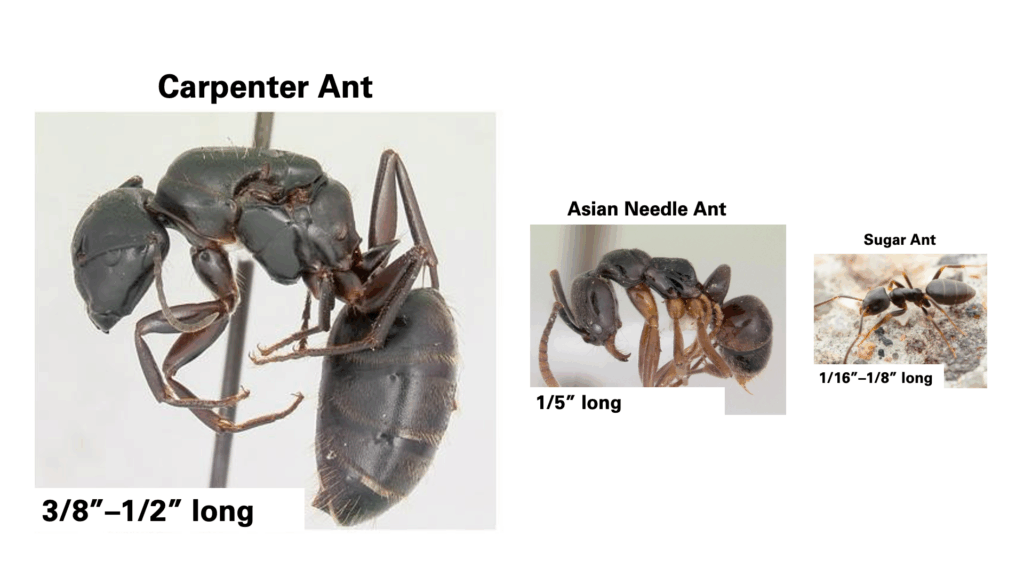
They are small to medium-sized ants, with long, slender bodies ranging from a shiny dark brown to black, accented by rusty-orange legs. The ants measure around 1/5 inch long – smaller than carpenter ants, but larger than sugar ants.
Unlike other common ants, they don’t form tidy trails or march in lines, nor do they build noticeable mounds. Instead, they often wander alone or in loose groups, which can make them easy to miss – and hard to manage once established.
Despite decades of cohabitation, Asian needle ants are now a growing concern for many communities due to their aggressive spread, painful sting and alarming ecological impact.

Asian needle ants are small, quiet foragers, but they can cause big problems for people and the environment.
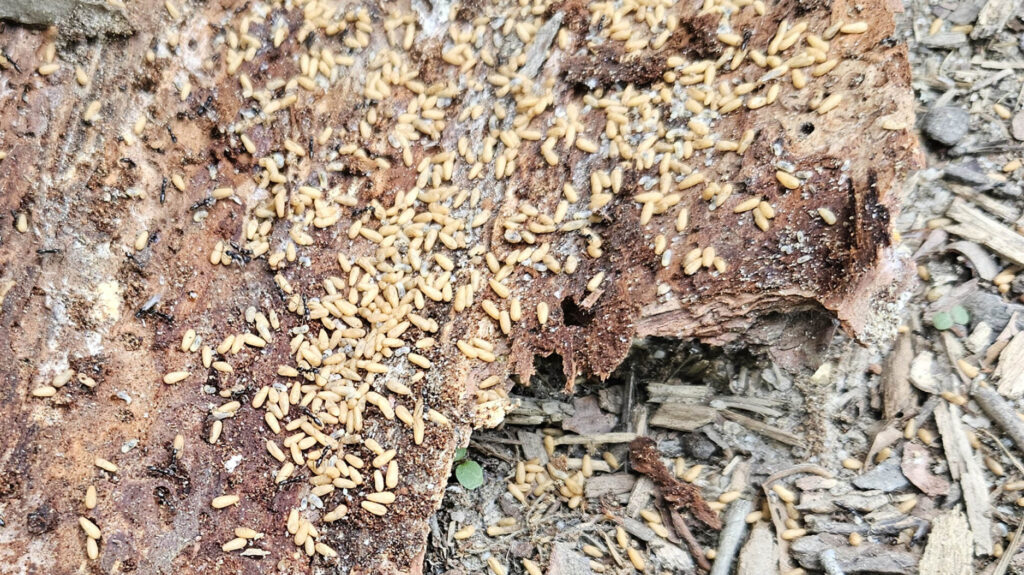
The tan-color structures are pupae, while the smaller white versions are larvae. Asian needle ants undergo complete metamorphosis, a life cycle including egg, larva, pupa and adult. It takes about a month for larvae to develop into adult ants.
Why Are They an Issue?
At a glance, they don’t look especially threatening. But despite their low profile, Asian needle ants pose risks to human health and natural habitats alike – let’s break down the issues:
They sting – and it hurts.
While they generally only sting when threatened or squished, Asian needle ants possess a painful and potentially dangerous venom. Their stings can hurt for hours or days, seemingly getting better only to return later. Children, older adults and those with compromised immune systems may be especially at risk for allergic reactions, which may require medical attention. Even a single sting has been known to cause symptoms ranging from localized pain to, in rarer cases, anaphylaxis.
They’re skilled home invaders.
Asian needle ants don’t swarm, but they can find their way into your home – especially in warmer months if they’re nesting nearby. You might not notice them at first, and that’s part of the problem. Differing from common house or sugar ants, Asian needle ants don’t follow scent trails or build mounds. And once indoors, they’re harder to manage, as typical ant baits often don’t work.
They’re tough on native wildlife.
Asian needle ants present a classic invasive species problem: they show up, outcompete the locals and throw off the natural balance. They’re great at finding food (they love termites), and they tend to take over prime real estate, use up limited resources and push out native ants that play critical roles in the local ecosystem. And unlike many invasive species, Asian needle ants are comfortable moving into undisturbed forests, which makes their ecological impact even harder to contain.
They may be small and quiet, but Asian needle ants can leave a big mark – on your skin and your local ecosystem.
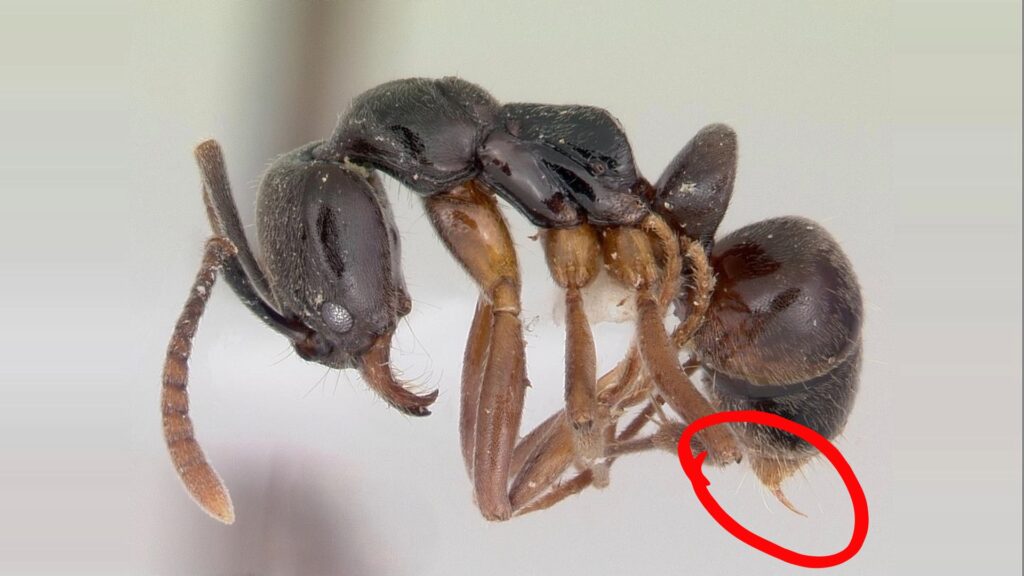
Asian needle ants use their sting only when threatened, but it can trigger serious allergic reactions — especially in children, older adults and those with existing sensitivities.
How to Spot (and Prevent) Them
They like damp, dark areas like garden beds, old stumps, mulch or wood piles – the kinds of places you’d expect to find other “bugs” like beetles, rollie pollies and, of course, termites.
You’re most likely to see them in spring and early summer, though warmer winters may extend that timeline. Typical Asian needle ant nests include hundreds of ants.
While they don’t leave pheromone trails or follow in lines, Asian needle ants have an unusual way of communicating food locations among the colony. When a worker ant finds a food source, they will return to the nest and physically carry a fellow worker to the spot. Keep an eye out for this act, called tandem carrying.
This unique strategy is one reason why Asian needle ants are difficult to manage with traditional baiting methods, as the insecticide spreads more slowly and less efficiently throughout the colony. Taking preventative measures is key:
- Eliminate potential nesting sites — Keep your yard clean and free of debris, such as leaf litter, stones, rocks, logs and woodpiles.
- Seal entry points — Caulk cracks and crevices around the foundation, windows and doors to prevent ants from entering your home.
- Remove attractants — Clean up food spills and ensure food is stored properly in airtight containers.
- Reduce moisture — Address leaky faucets or plumbing issues that create standing water.
The Supercolony Strategy
Unlike many native ants that build one nest with one queen, Asian needle ants can form a “supercolony” with multiple queens and multiple nests – possibly scattered across your yard, neighborhood or a larger area.
Working together as part of the same colony, ants can move between nests, share resources and continue expanding as conditions allow. In addition to helping them spread faster and outcompete native ants, the supercolony strategy makes them harder to control – killing one nest won’t wipe out the colony.
They’re quiet, coordinated and persistent, which is why early detection and management matter.
What to Do if You Find Asian Needle Ants
If you think you’ve found Asian needle ants:
- Check out WolfPest — a free web app from NC State that connects you to up-to-date pest info, identification tools and resources in your area.
- Snap a picture and get an ID — NC State Extension’s Plant Disease and Insect Clinic can help.
- Talk to a local pest pro — These ants can be tricky to bait and manage since they don’t behave like typical trail-following ants.
Additional Ant Resources
- Asian Needle Ants Around Landscapes and Homes (Extension Publication)
- Asian Needle Ants (NC State Extension | Entomology)
- More Ant Fact Sheets and ID Guides (Extension Publications)
Need more help?
NC State Extension has experts in every county – contact your local Extension center for more help with ant control or other home and garden questions.
- Categories:

